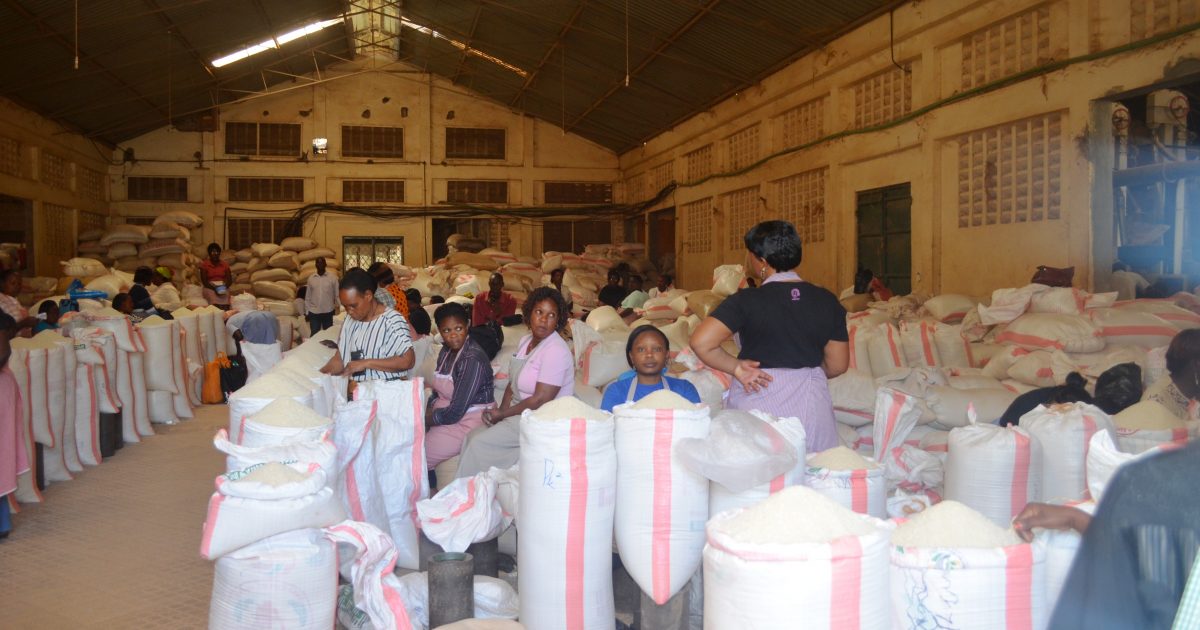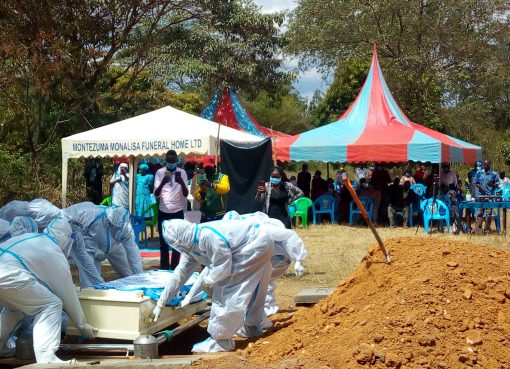Massive rice imports from the Far East have choked the economy of Ngurubani town in Mwea, Kirinyaga County that is the biggest grower and supplier of rice in Kenya.
Data from the Kenya Economic Survey 2019 shows Mwea region produces about 90,000 tonnes of rice, which translates to 80% of what Kenya produces.
Kenya requires about 400,000 tonnes of rice every year meaning that it has to import about 300,000 tonnes, or three times what is produced locally.
A Senior Agricultural Officer at the ministry of Agriculture headquarters in charge of the Rice Crop, Jane Ndung’u recently said the reality of importation of rice has existed for many years and the traders in the town in the past adjusted to the same.
“What has changed is that the importers are increasingly bringing in very low quality rice, blamed on smuggling through the Kenya Somali border,” she said.
The cheaper rice, Ndung’u said, is then sold at low prices and then blended with Mwea aromatic pishori rice to be sold as pishori variety, at a cheaper price, knocking off demand for the original variety that Mwea is known for.
The Agriculture ministry Rice Promotion Programme Unit says the practice is illegal and should be stopped; while those found engaging in the illicit business should be arrested and prosecuted.
The growth and development of Ngurubani town and allied activities in Kirinyaga County are associated with rice production and marketing.
The Management of Rice Promotion programme says five million tonnes of pure Pishori is lying in Mwea rice stores because the market is flooded with cheap poor quality rice.
Ndung’u said the Rice Promotion programme unit will be visiting the area with the Kenya Bureau of Standards officials to assess the situation and those carrying out the illegal business have been warned to prepare for the worst.
Traders at Wang’uru town say the imported rice varieties sell for as low as Sh80 per kilogram whereas pure pishori Mwea rice which has a distinctive aroma retails at Sh.130 a kilo.
A visit to the busy town reveals that milling factories are operating at half capacity because of the diminishing demand, slowing down the rice value chain that has starved the town of the much needed cash flow.
“The cheap imported rice poses stiff competition and for customers seeking to save a shilling in these hard economic times, many opt for the cheaper rice,” says Lisa Gitonga a rice trader in Mwea.
“Our biggest challenges are the unscrupulous traders who use devious means to pass off the imported rice as pure pishori,” adds Gitonga.
She said many customers are not wise enough and cannot differentiate between the pure pishori and a blend of cheap rice.
Strangely, traders raise concerns that pishori sells at about Sh.120 in some dealers outlets in Nairobi and Mombasa where ordinarily it would be higher than Mwea due to transport costs.
Traders and millers said they are disturbed by reports that some dishonest merchants had gone to the extent of spraying the cheaper imports with perfumes to cheat buyers that the product is pure pishori.
At many of the rice shops in Mwea, business is not brisk like before, a situation the traders link to market disruption by the cheap imports.
Jennifer Wanja said their sales have been on the decline as compared to previous years.
“When I started trading in rice here five years ago, business was booming, but nowadays the trade has slumped as customers opt for cheaper varieties sold elsewhere,” she said.
A visit to some of the major rice mills, including Nice Rice millers reveals that traders mostly women sit idle looking forward to the tiny trickle of customers coming in.
As a customer walks in, the traders scramble for his attention promising that their rice is pure and grade one.
“All we ask is why would the imported rice, sourced all the way from Pakistan sell cheaper than the locally produced one?” wondered Wawira Karimi who is also a rice trader at Mwea.
“That tells you the farm inputs, that includes fertilizer, chemicals for sprays and labour here is high and adds up to the cost of production. This makes our produce more expensive and unable to compete with the imported variety,” Karimi said.
She said rice farmers and traders were hopeful when the county government said they were to introduce an Italian technology of rice farming aimed at boosting production and earning more for farmers.
Governor Anne Waiguru had said the new farming technology was set to be introduced in selected areas of the vast Mwea irrigation scheme
The technology according to Waiguru is more efficient in water utilization as compared to canal-irrigated agriculture.
The governor after a tour of Italy came back and said some investors from Italy were much interested with the potential of rice farming in Mwea in that the area produces the largest amount of rice in the country.
Waiguru had noted that the cost of production was a big challenge to farmers and hence the great need to address the matter.
She said the new Italian technology, which is also highly mechanized when fully operationalized, would equip farmers with cost effective farming methods, lower the cost of production from the current Sh.50 per kilogram to about Sh.20.
“We may not be able to determine the price of our produce, but we can definitely reduce the cost of production, and thus up scaling the farmer’s total earnings,” she said.
The governor said some Italian investors, Pierluigi Bartoloni, Ventura De Lauretis and Prof. Giuseppe Lepore have shown interest in supporting rice farming and vegetable farming in the county.
“The county government in collaboration with the national government has taken to the control of the destructive Quelea birds which previously forced farmers to hire labour to fight them thus reducing the cost of production,” Waiguru said.
Established in 1954, the Mwea Irrigation Scheme has a gazetted area of 30, 350 acres with the area under irrigation being 26,000 acres in the main scheme and 4,000 acres in the out growers.
By Irungu Mwangi




